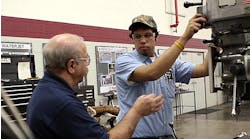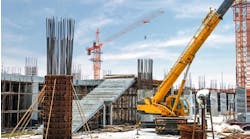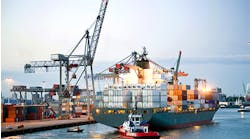Latest from Opinion
When I started my foundry career in 1984 I could not have imagined that our industry would possibly change as much as it has in just 30 years. The stories my father told me about how and why my grandfather started our company in the middle of World War II, and the stories he told me about his own 42-year career compared to my experiences, versus the stories my son tells me now about his foundry participation, all seem to be so conflicted. We certainly cannot be describing the same industry.
In fact we are not. In 1984 there were approximately 6,200 metalcasting facilities in the U.S.; today there are fewer than 2,000. Not many industries could have sustained a 67% reduction in manufacturing facilities and remained an important and relevant sector of the American economy, as the foundry industry has done. We could not have accomplished this without changing, and I mean a lot of changes in the way we approach, maintain, and conduct our businesses.
Today’s American foundries are cleaner, leaner and more efficient facilities than at any time in history. We now produce castings that were only dreamed of in past years, in alloys that were only recently discovered, converting weldments to award-winning components that provide casting buyers with un-paralleled quality and value.
American foundry owners are still mainly considered to be “small” businessmen and women, but they have very big ideas, considerable responsibilities, and major headaches!
American foundrymen and woman are more educated in a broader range of disciplines than ever before, and there is an increasing need for an even more varied education and comprehensive expertise.
American foundry suppliers are more technically competent, more educated, more nimble, more diverse, and more “in-tune” with global foundry dynamics than ever before. Suppliers must be logistical geniuses to compete in this global foundry market. New minerals, chemicals, equipment and techniques are being developed daily, so that American foundries can maintain their competitive standing in the global market.
Our industry is no longer the leader in tons of castings produced annually, but we remain well ahead of our competitors in terms of the quality of the castings we produce and the innovations we foster in products and processes.
The Casting Industry Suppliers Association has had to change, too. CISA now provides its members a significant opportunity for learning. We engage topics like the effect that the energy sector — “fracking” of oil and gas reserves — has had on the price and availability of silica sand. The most abundant mineral in the earth’s crust is not always available in the grades that foundries require, nor at a price they can afford. We have discussed how suppliers can help their foundry customers adapt new molding and core media that will keep them competitive for the future. We’ve launched a number of discussions on intermodal transportation and the importance of trucks, and the shortage of truck drivers and what that means to the cost effective delivery of foundry consumables.
CISA is more in tune than ever with the U.S. automotive market and the constantly changing dynamics of that essential industry. Simply stated, CISA provides more “content” that allows its members to appreciate the breadth of change in the industry to which all of us are dedicated.
So, while change is a part of everyone’s life today, I daresay that few lives have changed more in the past 30 years than those of American foundrymen and women, and I believe this will remain constant.
[email protected]










